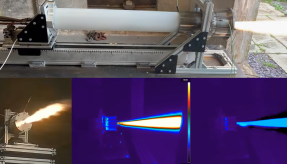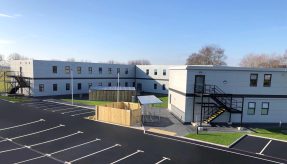
Advances in trauma care during the campaigns in Iraq and Afghanistan resulted in a year-on-year increase in survival from blast and ballistic injuries. This led, however, to survivors with increasingly serious injuries requiring intensive reconstruction and rehabilitation. We take a look at how the Ministry of Defence is seeking to exploit the emerging field of regenerative medicine for use at the frontline in order to maximise functional recovery from these devastating injuries.
Regenerative medicine is a relatively new field that seeks to develop methods to re-grow, repair or replace damaged or diseased cells, organs or tissues.
The implications of this emerging technology are huge and hold great potential for treating people injured as a result of conflict.
Recognising this, the Defence and Security Accelerator (DASA) has launched the Regenerative Medicine at the Front Line competition looking for proposals for regenerative technologies that can be applied very early after severe, traumatic injury resulting from combat or acts of terrorism.
This very early application of regenerative medicine techniques represents a completely new manner of utilisation, as opposed to normally being employed long after wounding locations remote to the battlefield.
Sponsored by the Regenerative Medicine project within the Protecting Our People programme at Defence Science and Technology Laboratory (Dstl), the competition challenges were identified from a detailed scoping study which combined an assessment of the likely future requirements of Defence Medical Services with the current regenerative medicine research landscape in the UK and internationally.
Indeed, trauma care has undergone radical change following Britain’s involvement in Afghanistan. Between 2006 and 2014, 1,982 UK Service Personnel were admitted to the field hospital with injuries that required the activation of the UK trauma team, having sustained 10,371 separate injuries.
The threat posed by Improvised Explosive Devices (IEDs) is evident in the figures. Half of injuries sustained were to the extremities – the biggest number of those to the lower limbs.
This unfortunate familiarity has led to significant improvements in survival following severe injury from gunshot wounds or explosion. However, many are left with life-changing injuries such as loss of limbs, burns and scarring. Injuries such as these can not only have a physical impact but can also leave severe psychological damage.
Future British military operations could potentially see longer casualty evacuation timelines and medical care being delivered in harsher environments.
This presents the difficulty of delivering not only life-saving interventions but also ongoing medical management of the casualty which should seek to maximise functional recovery. Unfortunately, many of what would be considered the more traditional approaches in regenerative medicine could only be delivered at a hospital facility back home.
However, the scoping study, carried out jointly by Dstl and the Royal Centre for Defence Medicine (RCDM), identified that there are various spheres of research in tissue engineering and regenerative medicine which could be utilised as early interventions that could further revolutionise front line trauma care.
It is envisaged that shifting the focus of tissue regeneration to earlier in the care pathway could maximise the success of later functional recovery.
The battlefield is clearly an extremely challenging environment for the development and delivery of regenerative medicine technologies. This means a number of factors must be considered in the development of such approaches; these include the type and severity of the injury, the environment and the logistical context.
Given these obstacles, the MOD is keen to explore technologies that will help those injured on the frontline and reduce the burden on later care supplied by both the MOD and the National Health Service.
A DASA Innovation Network event was held in Bristol in February, as the competition sought new technologies and approaches that bring the principles of regenerative medicine to the front line and provide a truly disruptive capability for Defence.
The competition has two challenge areas – bioengineered blood and blood components; and the preservation and regeneration of soft tissue using biophysical approaches. For both, proposed technologies must take into account the particular difficulties of delivering trauma care in challenging environments.
The first challenge explores how tissue engineering and regenerative medicine are likely to hold the key to the logistical challenges of using blood products in future conflicts, and how these products could be optimised
The production of blood components in vitro would remove the requirement for blood donation. Above and beyond this, however, it is envisaged that this could lead to further innovation – using the principles of tissue engineering to produce blood components with reduced immunogenicity, improved storage profiles or augmented functionality, for example.
In recent combat operations, red cells and platelets have been the only ‘cellular therapy’ used in theatre as replacements for blood lost during haemorrhage. In this challenge, DASA is looking for proposals that push at the boundaries of what these high value assets are able to do.
The second challenge focuses on finding solutions to be used early after wounding following high-energy transfer from ballistics and blast to encourage the regeneration of soft tissue and mitigate the ensuing progressive tissue loss.
The repair and regeneration of severe tissue damage involves a complex set of biological processes that need to occur with the right balance, at the right time and in the right sequence for a tissue to repair, regenerate and/or undergo successful reconstructive procedures.
Early intervention often leads to more successful outcomes and a variety of biological approaches are under investigation for the manipulation of wound healing and regeneration after significant soft tissue damage.
Many of these approaches present logistical difficulties at the frontline or during casualty evacuation, which could be quite protracted in future operations, with extended time to the delivery of definitive care also likely to negatively impact progressive tissue loss.
Physical approaches can be used to encourage the repair and regeneration of a variety of tissues and are likely to be less of a logistical burden than biological solutions. They may be a useful way to halt the progressive deterioration of tissue during transit and switch tissues to a regenerative trajectory.
The competition encourages submissions that develop the use of acellular approaches for the preservation and regeneration of soft tissues.
Dr. Abigail Spear, Principal Scientist at Dstl and Technical Lead for DASA funding competition, said: “This dedicated focus on regenerative medicine research has been, and continues to be, an extremely fruitful collaboration between Dstl and the Academic Department for Military Surgery and Trauma at the Royal Centre for Defence Medicine. In this way we have brought together scientific, clinical and operational expertise to form an evidence-based strategy for MOD’s engagement in regenerative medicine research.
“This DASA funding competition forms a first step in implementation of our strategy to provide disruptive solutions for front line trauma care in the future. We are excited to see these projects develop and welcome continued engagement from inside and outside of Defence as we move forward.”
The closing date for submissions to this competition was in April, with Phase 1 funding decisions made in May.
DASA will take forward a number of the most successful outputs from phase 1 projects for phase 2 funding. Only bidders funded at phase 1 will qualify for entry into phase 2 of the competition where at least an additional £500,000 of funding will be made available. Phase 2 funding will be awarded, based on the Accelerator assessment criteria, on a per-project basis.
A phase 1 collaboration event will be held later this year, with a demonstration day due to take place in June 2019.
For more information, please visit: www.gov.uk/government/organisations/defence-and-security-accelerator
image © Crown Copyright
If you would like to join our community and read more articles like this then please click here.
DASA Defence and Security Accelerator Ministry of Defence Regenerative medicine







